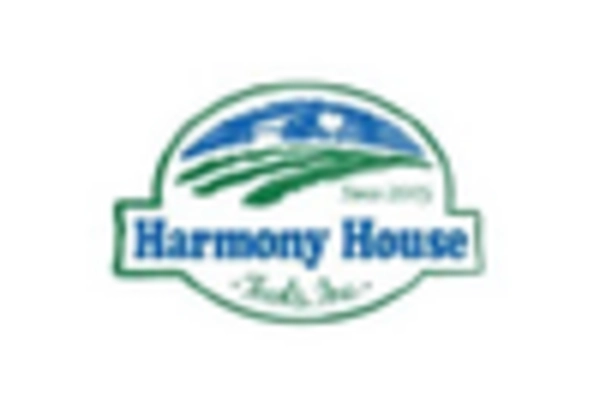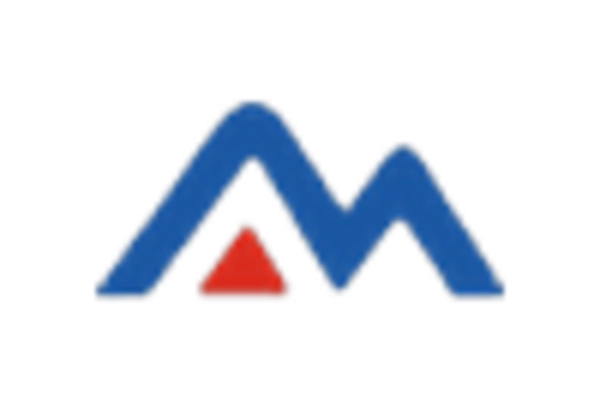Increased Shelf Stability and Longevity
The inherent properties of freeze dried foods, which allow for extended shelf stability, serve as a significant driver for the Freeze Dried Food Market. These products can last for years without refrigeration, appealing to consumers who prioritize long-term food storage solutions. Recent statistics indicate that the food preservation market is projected to grow at a rate of 6% annually, reflecting a growing consumer awareness of food waste and the need for sustainable practices. This trend indicates that the Freeze Dried Food Market is well-positioned to capitalize on the increasing demand for long-lasting food options, particularly among households looking to stockpile food for emergencies or unforeseen circumstances.
Innovations in Freeze Drying Technology
Technological advancements in freeze drying processes are significantly influencing the Freeze Dried Food Market. Innovations that enhance the efficiency and quality of freeze drying are making these products more accessible and appealing to consumers. For instance, improvements in energy efficiency and the ability to preserve a wider range of food types are expanding the market potential. Recent data indicates that the freeze drying technology market is expected to grow at a rate of 5% annually, which may positively impact the Freeze Dried Food Market by enabling manufacturers to produce higher quality products at lower costs. This trend suggests that ongoing technological developments could lead to increased competition and innovation within the industry.
Rising Popularity of Outdoor Activities
The increasing inclination towards outdoor activities such as camping, hiking, and backpacking is a notable driver for the Freeze Dried Food Market. As individuals seek convenient and lightweight food options for their adventures, freeze dried foods have emerged as a preferred choice. These products offer long shelf lives and retain nutritional value, making them ideal for outdoor enthusiasts. According to recent data, the outdoor recreation market has seen a growth rate of approximately 5% annually, which correlates with the rising demand for freeze dried food products. This trend suggests that as more people engage in outdoor activities, the Freeze Dried Food Market is likely to experience a corresponding increase in sales and product innovation.
Growing Interest in Emergency Preparedness
The rising awareness surrounding emergency preparedness is a critical driver for the Freeze Dried Food Market. As consumers become more conscious of potential natural disasters and other emergencies, the demand for non-perishable food items has surged. Freeze dried foods, with their long shelf life and nutritional retention, are increasingly viewed as essential components of emergency food supplies. Recent surveys indicate that approximately 30% of households are actively preparing emergency kits, which often include freeze dried products. This trend suggests that the Freeze Dried Food Market is likely to benefit from the growing consumer focus on preparedness, leading to increased sales and product diversification.
Adoption of Freeze Dried Foods in the Food Service Sector
The food service sector's growing adoption of freeze dried foods is a compelling driver for the Freeze Dried Food Market. Restaurants and catering services are increasingly incorporating these products into their menus due to their ease of use and ability to enhance flavor without compromising quality. The convenience of rehydrating freeze dried ingredients allows chefs to create gourmet dishes with minimal preparation time. Recent market analysis suggests that the food service industry is expanding at a rate of 4% annually, which may lead to a heightened demand for freeze dried food products. This trend indicates that the Freeze Dried Food Market could see substantial growth as more food service establishments recognize the benefits of these versatile ingredients.

















Leave a Comment